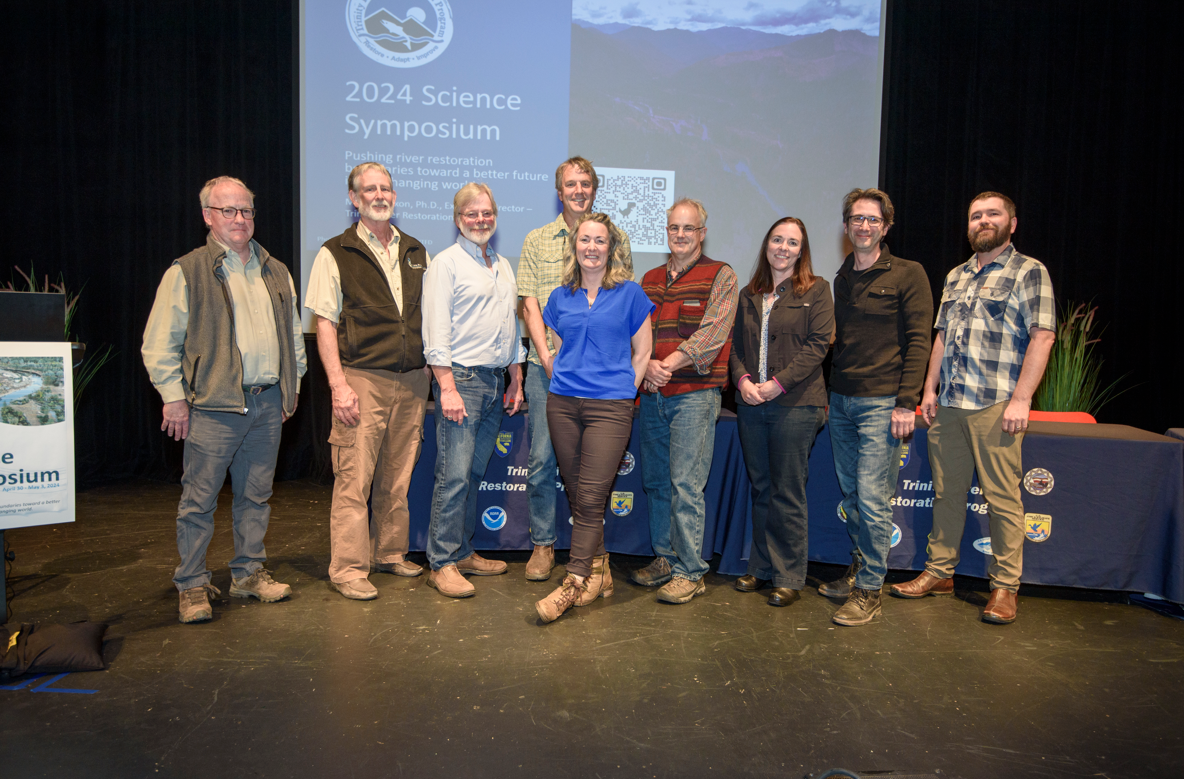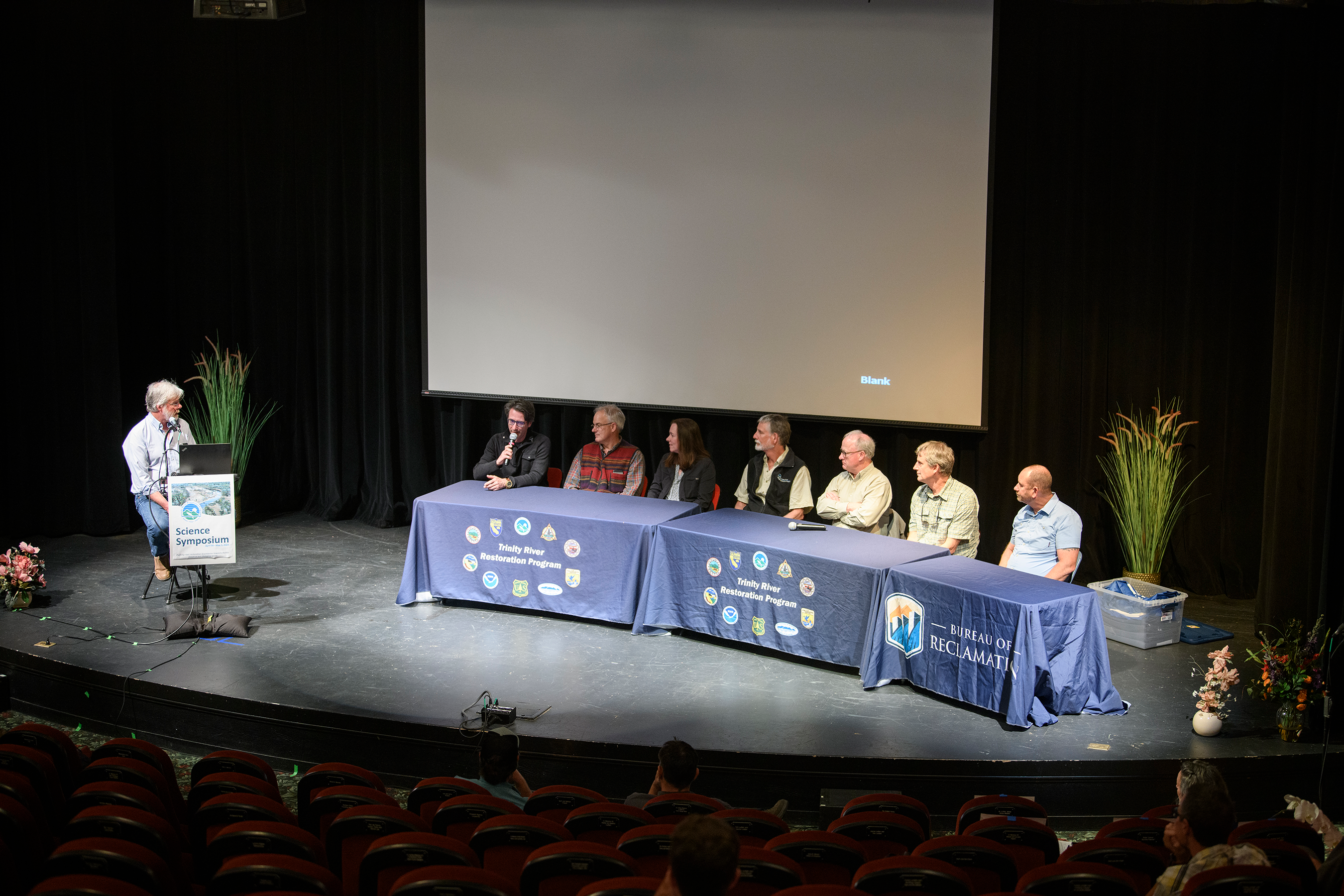The final day of the symposium focused on the physical environment that underpins the complex riparian and aquatic river ecosystem. We learned that while the Trinity River is actually used as an example for successful implementation of a functional flows approach to streamflow management, we are still missing some key components of a functional flow hydrograph that are essential to optimizing the physical and ecological processes of the river.

Contrary to the prevailing folk wisdom in salmonid streams that all fine sediment in salmonid streams is bad, it was revealed that having too little fine sediment can impede the movement of larger gravels, and that having river flows match tributary flows is important to moving fine sediment in a way that is healthy for the river, rather than harmful. There were insights about what we know about how gravel routes through the upper river and what that means for our approach to sediment augmentation. A uniquely interdisciplinary presentation focused on how flow management influences where riparian plants grow, spurring conversation about how varying base flows could promote willow growth across different active channel widths, which could provide roughness and improve sediment sorting and storage. The takeaways really came down to this; we can’t have healthy fish and other wildlife populations without process, and we have learned a lot about how to improve those processes.

The panel discussion at the day’s conclusion was moderated by SAB member John Buffington, Ph.D.. The questions from the audience were stimulating and the panelists conversation informative. The discussion can be viewed in its entirety by clicking the YouTube link below.
Presentation videos are being edited to include presenter slides – we will be uploading them to the 2024 Science Symposium page as they become available. For a list of power point presentations, please click here.
